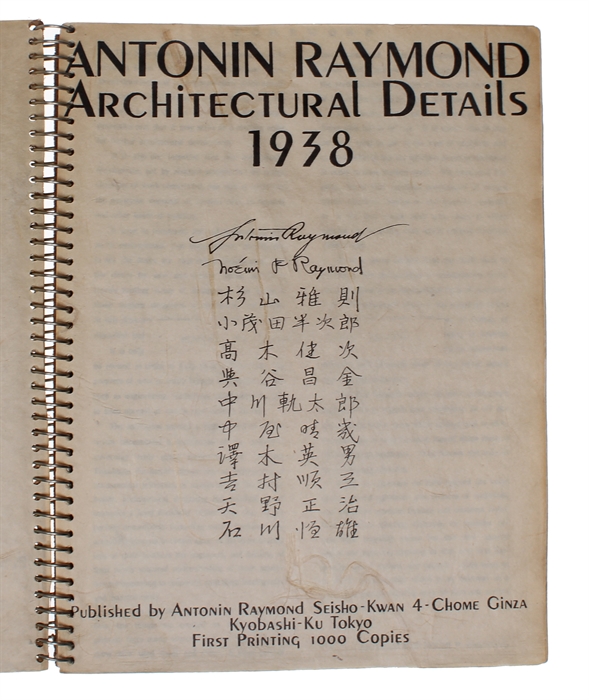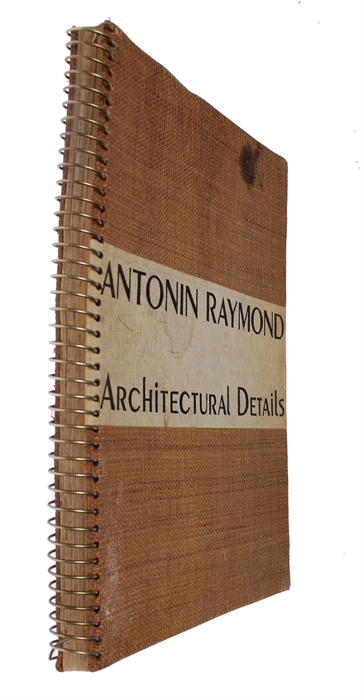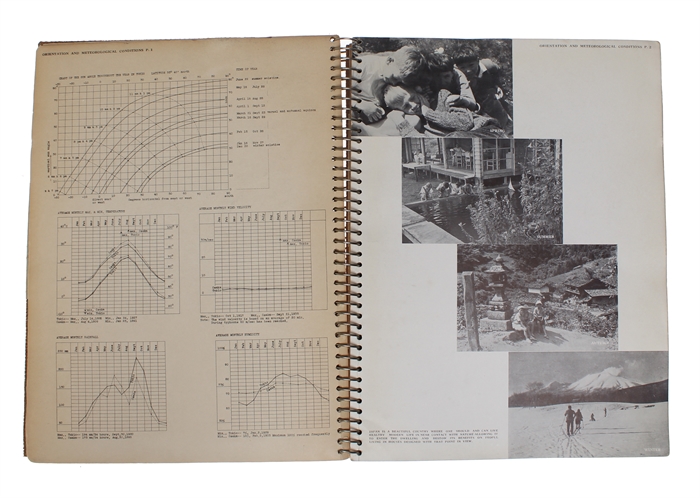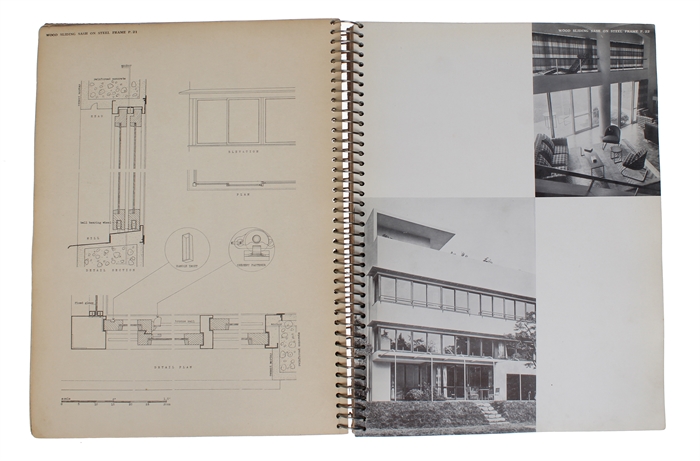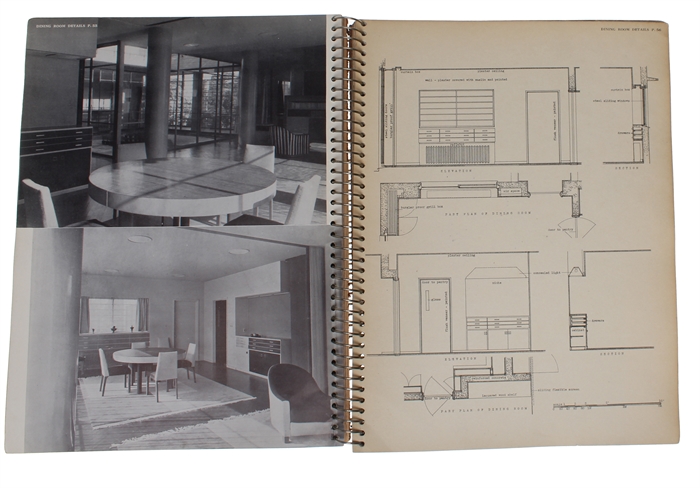RAYMOND, ANTONIN (+) NOEMI ANTONIN
Architectural Details 1938.
Tokyo, Antonin Raymond Seisho-Kwan 4-Chome Ginza, 1938.
4to (300 x 240 mm). In the original cloth covered board with spiral spine. With white title paper label to front board. Front board with a few stains. Previous owner’s stamp (Arkitekt Georg Fischer) to upper inner margin of front free end-paper. Both author’s printed signatures including a list of names from his staff and pupils to title-page. Internally fine. 116 pp. Printed in 1000 copies.
First edition of Antonin’s famous work published the same year he ended his Japanese period and returned to USA. Antonin played a pivotal role in the dissemination of modern architecture in the Japan. His initial work with American architects Cass Gilbert and Frank Lloyd Wright gave him an insight into the use of concrete that he would refine throughout his career, taking these innovations with him to Tokyo where he explored it’s use and integration with traditional Japanese building techniques. Antonin Raymond (1888-1976) was a prominent Czech-American architect now primarily known for his significant contributions to modern architecture in Japan. After World War II, Raymond returned to the United States but maintained connections with Japan. He continued his architectural practice and also worked as a professor at the University of Hawaii. Raymond received numerous accolades for his contributions to architecture, including the Order of the Sacred Treasure, a prestigious honor bestowed upon him by the Japanese government in recognition of his significant achievements.
In 1919, Raymond relocated to Tokyo, Japan, where he would spend the majority of his career and make a lasting impact on the architectural landscape of the country. He was invited by the Japanese government to work as a consultant and advisor on contemporary architecture. Along with his wife, Noémi Pernessin Raymond, who was also an architect, Raymond established an architectural firm called "Raymond and Raymond."
One of Raymond's most notable projects is the iconic Imperial Hotel in Tokyo, completed in 1923. The hotel showcased his ability to merge Western architectural techniques with traditional Japanese craftsmanship, resulting in a groundbreaking design that successfully withstood the devastating 1923 Great Kanto Earthquake. The Imperial Hotel became a symbol of Raymond's architectural prowess and innovation.
Order-nr.: 60418

